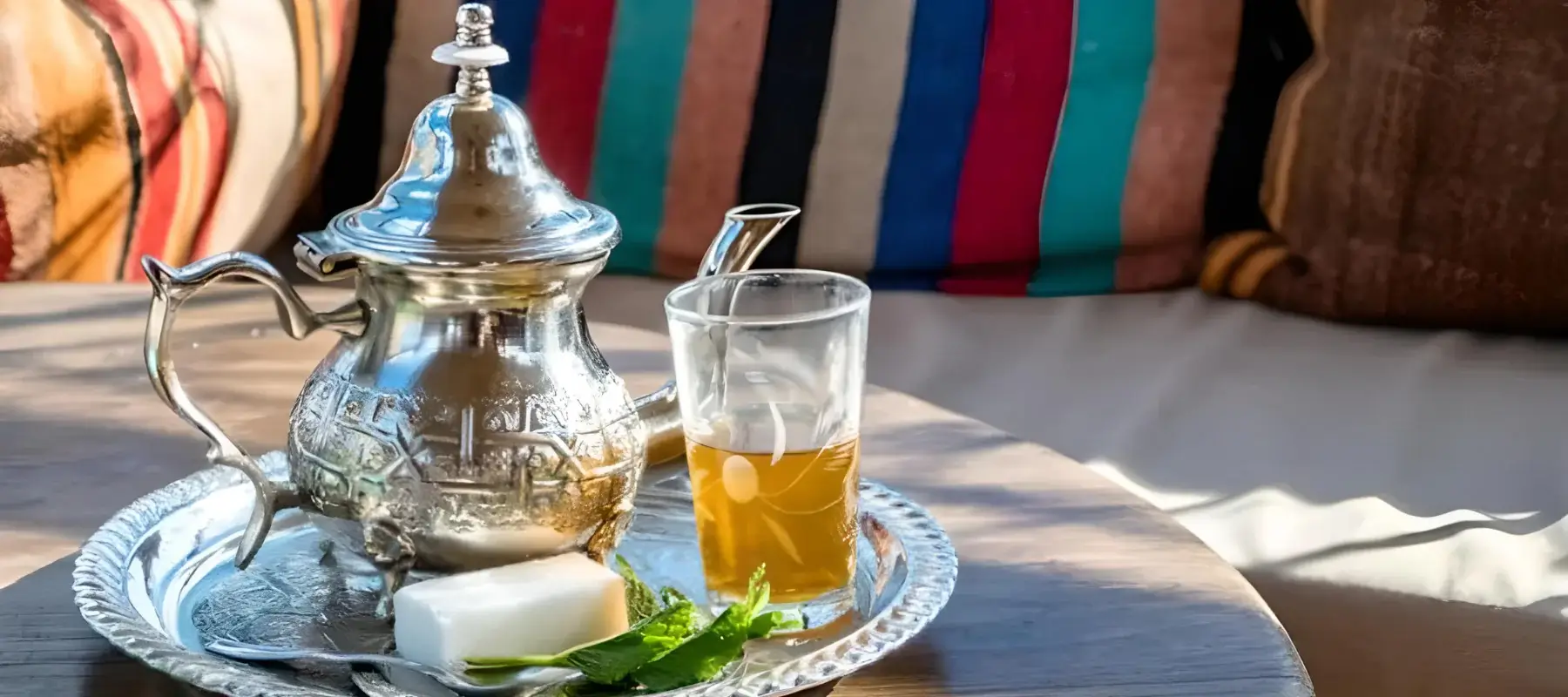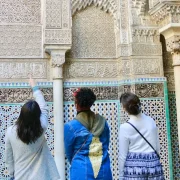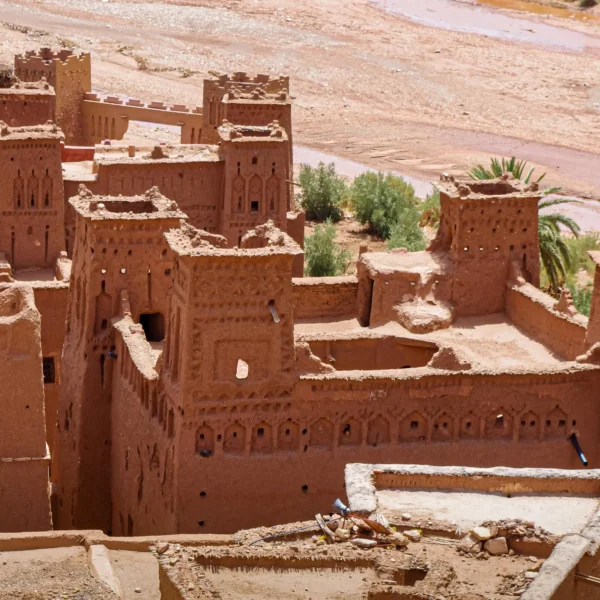
Exquisite Moroccan Mint Tea: A Refreshing Journey of Flavor and Culture
Table of Contents
ToggleImagine yourself wandering through the vibrant souks of Marrakech, where the air is filled with the scents of exotic spices, fresh herbs, and sizzling street food. As you soak in the rich cultural tapestry, a warm, inviting aroma drifts toward you. A vendor, dressed in traditional attire, gracefully pours a golden, frothy liquid from a silver teapot, creating a mesmerizing stream of tea.
This, my friend, is Moroccan mint tea—not just a drink but an experience. Known as “Atay B’nana” in Arabic, Moroccan mint tea is a blend of gunpowder green tea, fresh spearmint, and lots of sugar, brewed to perfection and poured with flair. It is more than just a refreshment; it is a ritual, a symbol of hospitality, and a deep-rooted tradition woven into the very fabric of Moroccan culture.
But what makes Moroccan mint tea so special? And why is it considered Morocco’s national drink? Let’s embark on a flavorful journey to uncover the history, traditions, health benefits, and even modern twists on this beloved beverage.
A Brief History of Moroccan Mint Tea

The Origins: A Blend of Cultures and Traditions
The story of Moroccan mint tea is as rich as its flavor. While tea itself originated in China over 5,000 years ago, it was not introduced to Morocco until the 18th century, thanks to European traders. Some historians suggest that British merchants brought Chinese green tea to Moroccan ports in exchange for goods like dates and spices.
The Moroccans, known for their flair for blending flavors, took this tea and made it their own by adding fresh mint and sugar. This transformation turned a simple green tea into a refreshing, fragrant, and uniquely Moroccan beverage.
“Tea was never just a drink in Morocco; it became a symbol of hospitality, a gesture of respect, and a way of life.”
How Mint Tea Became Morocco’s National Drink
Over the years, Moroccan mint tea evolved into a daily ritual enjoyed by people from all walks of life. From the bustling tea houses of Fez to the remote Berber villages in the Atlas Mountains, mint tea is prepared and served with love and precision.
Whether you’re a guest in a home, a traveler in a riad, or a merchant in a souk, one thing is certain: you will be offered mint tea. And refusing it? That’s almost unheard of! It is considered impolite to decline a cup, as serving tea is a gesture of friendship and welcome.
Traditional Moroccan Mint Tea Recipe

Now that you know its history, let’s dive into how to make authentic Moroccan mint tea at home!
Ingredients Needed for an Authentic Brew
To create a perfect pot of Moroccan mint tea, you’ll need:
✅ 1 tablespoon gunpowder green tea (loose-leaf)
✅ A handful of fresh spearmint leaves (the more, the better!)
✅ 2–4 tablespoons of sugar (adjust to taste)
✅ 4 cups of boiling water
✅ A traditional Moroccan teapot (or any heat-resistant teapot)
Step-by-Step Brewing Guide
1. Rinse the Tea Leaves
Place one tablespoon of gunpowder green tea in your teapot. Add a small amount of boiling water, swirl it around, and discard the water. This step cleans the tea and removes bitterness.
2. Brew the Tea
Pour hot water into the teapot and let the tea steep for 3–5 minutes to release its bold flavor.
3. Add Mint and Sugar
Toss in a generous handful of fresh mint leaves and sugar to taste. Stir well or pour back and forth between cups to mix.
4. Pour with Style
Moroccan tea is never stirred with a spoon! Instead, it’s poured from a height to create a foamy top. This enhances the taste and shows off the skill of the tea maker.
“The higher the pour, the better the tea!”
The Cultural Significance of Moroccan Mint Tea

A Symbol of Hospitality and Friendship
In Morocco, mint tea is more than just a drink—it’s an unspoken language of hospitality. Offering tea to a guest is a sacred ritual that signifies welcome, generosity, and respect.
Whether you’re visiting a friend’s house, shopping in a souk, or closing a business deal, tea is always present.
Tea Rituals in Moroccan Homes and Cafés
Moroccan tea culture is deeply social. In homes, the eldest male or host usually prepares the tea. The process is ceremonial, and every step is done with great care.
In Moroccan cafés, sipping mint tea is a leisurely experience. Locals gather to chat, play cards, or simply watch the world go by, making tea time an integral part of daily life.
Health Benefits of Moroccan Mint Tea
Aside from its incredible taste, Moroccan mint tea is packed with health benefits.
Antioxidant Power: Why Green Tea is Great for You
Green tea is rich in antioxidants called catechins, which help:
✅ Boost metabolism
✅ Improve brain function
✅ Reduce the risk of heart disease
Digestion and Relaxation Benefits of Mint
Spearmint is a natural digestive aid, making mint tea the perfect after-meal drink. It helps:
✅ Reduce bloating and indigestion
✅ Relieve headaches
✅ Lower stress and anxiety
“Moroccan mint tea is not just a drink—it’s a remedy for the body and soul.”
Where to Buy Authentic Moroccan Mint Tea and Ingredients
To recreate this authentic experience at home, you’ll need the right ingredients.
Finding Quality Loose-Leaf Green Tea and Fresh Mint
Look for loose-leaf gunpowder green tea from Morocco or China. Fresh spearmint can be found at farmers’ markets or Middle Eastern grocery stores.
Best Places to Buy Online and In-Person
For authentic ingredients, visit The Moroccan Tours to find the best tea products and even book a tea-tasting experience in Morocco!
FAQs About Moroccan Mint Tea
What is the best tea to use for Moroccan mint tea?
Gunpowder green tea is the traditional choice due to its strong flavor and ability to blend well with mint.
How much sugar is added to Moroccan mint tea?
Moroccan tea is traditionally very sweet, using 2–4 tablespoons of sugar per pot. However, you can adjust it to your preference.
Can I make Moroccan mint tea without green tea?
Yes! For a caffeine-free version, use chamomile, rooibos, or verbena instead of green tea.
Why is Moroccan mint tea poured from a height?
Pouring from a height aerates the tea, enhances the flavor, and creates a frothy top—an essential part of Moroccan tea culture.
A Lasting Tradition in Every Sip
Moroccan mint tea is not just a drink; it’s a way of life. Whether enjoyed on the bustling streets of Fez, in the peaceful Sahara Desert, or in your own home, this tea is a gateway to Moroccan hospitality, history, and tradition.
If you’re eager to experience authentic Moroccan tea firsthand, check out The Moroccan Tours for culinary adventures, guided tours, and more!
“One sip of Moroccan mint tea, and you’re instantly transported to the magic of Morocco.”









